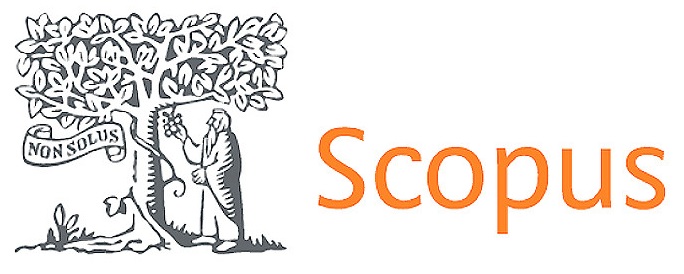Early Career Researchers' Self-Reported Interest in Participating in Interdisciplinary Research: A Mixed-Method Study.
DOI:
https://doi.org/10.56294/saludcyt20251330Keywords:
Early career researchers, Self-reported interest, Interdisciplinary researchAbstract
Introduction: Interdisciplinary research teams, combining diverse perspectives and methodologies, are essential for solving complex problems and generating innovative solutions. This study aimed to identify researcher-centered attributes that influence Early Career Researchers in their interest toward interdisciplinary research participation.
Method: The study was conducted among 330 Early Career Researchers, who had recently participated in an interdisciplinary research project. The 24-month study was conducted in two parts: a cross-sectional questionnaire and in-depth interviews with selected participants. The participants, who were multidisciplinary professionals (e.g., physicians, nurses, therapists, engineers, and pharmacists), were working or studying for their master’s degrees during the study period. The post-participation questionnaire assessed participants' interest in future interdisciplinary studies and their attitudes towards initiating similar projects. Six questions addressed ease of participation, emotional status during participation, and willingness to engage in future studies.
Results: Mood of the day, participatory satisfaction, curiosity level, and ease of participation were positively correlated to interest in future participation, whereas physical fatigue was negatively correlated. Spearman’s rho correlation of moderate intensity was observed between mood of the day and participatory satisfaction (0.550, p < 0.001); curiosity level and ease of participation (0.532, p < 0.001); ease of participation and interest in participation in other studies (0.577, p < 0.001).
Conclusion: Acknowledging researcher-centered attributes in creating supportive environments fosters interest in interdisciplinary research participation and essential for developing a collaborative academic ecosystem.
References
Hook L. Collaborative Frontiers: Integrating Disciplines for Progress. International Journal of Research and Review Techniques. 2022 Nov 19;1(1):30-6. Available from: https://ijrrt.com/index.php/ijrrt/article/view/9
Lyall C, Meagher LR. A masterclass in interdisciplinarity: Research into practice in training the next generation of interdisciplinary researchers. Futures. 2012 Aug 1;44(6):608-17. Available from: https://doi.org/10.1016/j.futures.2012.03.011 DOI: https://doi.org/10.1016/j.futures.2012.03.011
Specht A, Crowston K. Interdisciplinary collaboration from diverse science teams can produce significant outcomes. PLoS One. 2022 Nov 29;17(11):e0278043.
Available from: https://doi.org/10.1371/journal.pone.0278043 DOI: https://doi.org/10.1371/journal.pone.0278043
Keynejad RC, Yapa HM, Ganguli P. Achieving the sustainable development goals: investing in early career interdisciplinarity. Humanities and Social Sciences Communications. 2021 Dec;8(1).
Available from: https://doi.org/10.1057/s41599-021-00834-6 DOI: https://doi.org/10.1057/s41599-021-00834-6
Mula J, Rodríguez CL, Domingo Segovia J, Cruz‐González C. Early career researchers' identity: A qualitative review. Higher Education Quarterly. 2022 Oct;76(4):786-99. Available from: https://doi.org/10.1111/hequ.12348 DOI: https://doi.org/10.1111/hequ.12348
Pannell JL, Dencer‐Brown AM, Greening SS, Hume EA, Jarvis RM, Mathieu C, Mugford J, Runghen R. An early career perspective on encouraging collaborative and interdisciplinary research in ecology. Ecosphere. 2019 Oct;10(10):e02899.
Available from: https://doi.org/10.1002/ecs2.2899 DOI: https://doi.org/10.1002/ecs2.2899
Andrews EJ, Harper S, Cashion T, Palacios-Abrantes J, Blythe J, Daly J, Eger S, Hoover C, Talloni-Alvarez N, Teh L, Bennett N. Supporting early career researchers: insights from interdisciplinary marine scientists. ICES Journal of Marine Science. 2020 Mar 1;77(2):476-85. Available from: https://doi.org/10.1093/icesjms/fsz247 DOI: https://doi.org/10.1093/icesjms/fsz247
Olatunji G, Emmanuel K, Osaghae OW, Timilehin I, Aderinto N, Abdulbasit MO. Enhancing clinical and translational research in Africa: a comprehensive exploration of challenges and opportunities for advancement. Journal of Clinical and Translational Research. 2023;9(5):357-68.
Available from: http://dx.doi.org/10.18053/jctres.09.202305.23-00079 DOI: https://doi.org/10.18053/jctres.09.202305.23-00079
Lombardi D, Shipley TF, Astronomy Team, Biology Team, Chemistry Team, Engineering Team, Geography Team, Geoscience Team, and Physics Team. The curious construct of active learning. Psychological Science in the Public Interest. 2021 Apr;22(1):8-43. Available from: https://doi.org/10.1177/1529100620973974 DOI: https://doi.org/10.1177/1529100620973974
Hidi S, Renninger KA. The four-phase model of interest development. Educational psychologist. 2006 Jun 1;41(2):111-27.
Available from: https://doi.org/10.1207/s15326985ep4102_4. DOI: https://doi.org/10.1207/s15326985ep4102_4
Hidi SE, Renninger KA. Interest development and its relation to curiosity: Needed neuroscientific research. Educational Psychology Review. 2019 Dec;31(4):833-52. Available from: https://doi.org/10.1007/s10648-019-09491-3 DOI: https://doi.org/10.1007/s10648-019-09491-3
Ainley M. Curiosity and interest: Emergence and divergence. Educational Psychology Review. 2019 Dec;31(4):789-806. Available from: https://doi.org/10.1007/s10648-019-09495-z DOI: https://doi.org/10.1007/s10648-019-09495-z
Peterson EG, Hidi S. Curiosity and interest: current perspectives. Educational Psychology Review. 2019 Dec;31(4):781-8.
Available from: https://doi.org/10.1007/s10648-019-09513-0 DOI: https://doi.org/10.1007/s10648-019-09513-0
Umoquit MJ, Tso P, Burchett HE, Dobrow MJ. A multidisciplinary systematic review of the use of diagrams as a means of collecting data from research subjects: application, benefits and recommendations. BMC medical research methodology. 2011 Dec;11:1-0. Available from: https://doi.org/10.1186/1471-2288-11-11 DOI: https://doi.org/10.1186/1471-2288-11-11
Ashley F. Accounting for research fatigue in research ethics. Bioethics. 2021 Mar;35(3):270-6. Available from: https://doi.org/10.1111/bioe.12829 DOI: https://doi.org/10.1111/bioe.12829
Sheikh AS, Sheikh SA, Kaleem A, Waqas A. Factors contributing to lack of interest in research among medical students. Advances in medical education and practice. 2013 Nov 7:237-43. Available from: https://doi.org/10.2147/AMEP.S51536 DOI: https://doi.org/10.2147/AMEP.S51536
Downloads
Published
Issue
Section
License
Copyright (c) 2025 Supriya S, Shantanu Patil, Raghul Gandhi Venkatesan, Rajapriya Palanirasu, Bagavandas M (Author)

This work is licensed under a Creative Commons Attribution 4.0 International License.
The article is distributed under the Creative Commons Attribution 4.0 License. Unless otherwise stated, associated published material is distributed under the same licence.



